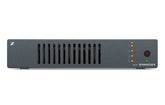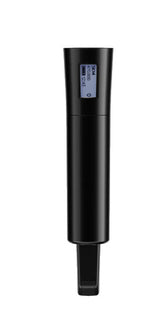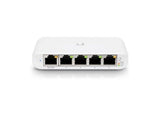Top 5 Networking Trends That Will Shape 2025
Introduction
The networking landscape is evolving rapidly, driven by AI, cloud computing, and cybersecurity advancements. By 2025, global internet traffic is expected to surpass 500 exabytes per month, reflecting the growing reliance on high-speed, reliable, and secure network infrastructure.
Businesses, IT leaders, and network engineers must stay ahead of these emerging trends to ensure seamless operations, enhance security, and improve efficiency. From AI-driven automation to 6G research, networking is set to redefine how businesses connect, communicate, and operate.
This article explores the top five networking trends for 2025, their impact on businesses, challenges, and best practices for implementation.
1. AI-Driven Network Automation
What Is AI-Driven Network Automation?
AI-driven network automation leverages machine learning (ML) and AI algorithms to optimize network performance, reduce downtime, and enhance security. It eliminates manual network configurations and automates real-time decision-making.
Benefits & Use Cases
-
Zero-Touch Provisioning (ZTP): AI configures devices automatically, reducing deployment times.
-
Predictive Maintenance: AI analyzes network traffic patterns to detect potential failures before they occur.
-
Improved Security: AI-powered intrusion detection systems (IDS) identify and mitigate threats in real time.
-
Optimized Traffic Management: AI enhances Quality of Service (QoS) by prioritizing critical applications.
Challenges & Considerations
-
Data Privacy Issues: AI requires vast amounts of network data, raising concerns over data security and compliance.
-
Integration with Legacy Systems: Many businesses still rely on traditional networking, making AI adoption challenging.
Best Practices for Implementation
-
Invest in AI-compatible networking hardware and software.
-
Train IT staff to manage AI-powered network automation tools.
-
Use AI-driven analytics to optimize bandwidth and network traffic management.
2. Expansion of 5G and 6G Research
What Is 5G & 6G Networking?
5G is revolutionizing wireless connectivity with ultra-low latency and high-speed data transfer, while 6G research is already in motion, promising speeds 100 times faster than 5G.
Benefits & Use Cases
-
Faster IoT Connectivity: Supports smart cities, autonomous vehicles, and industrial automation.
-
Enhanced Video Conferencing: Higher speeds enable 4K and 8K video streaming with minimal buffering.
-
Improved Remote Work & Cloud Computing: Businesses can rely on cloud applications without network bottlenecks.
Challenges & Considerations
-
High Infrastructure Costs: Deploying 5G and preparing for 6G requires significant investment.
-
Limited Coverage: Rural areas still face 5G accessibility challenges.
-
Security Concerns: As 5G expands, cyberattacks targeting network vulnerabilities increase.
Best Practices for Implementation
-
Invest in 5G-compatible hardware to future-proof network infrastructure.
-
Leverage edge computing to reduce reliance on centralized data centers.
-
Implement strong encryption and security protocols for wireless communications.
3. Secure Access Service Edge (SASE) Adoption
What Is SASE?
SASE (Secure Access Service Edge) integrates network security and SD-WAN capabilities into a single cloud-based solution. It provides secure remote access, threat detection, and traffic optimization.
Benefits & Use Cases
-
Zero Trust Security: Ensures that every access request is verified, reducing cybersecurity risks.
-
Scalable Cloud Networking: Enhances multi-cloud security and access control.
-
Improved Remote Workforce Management: Secure access for remote employees without VPN limitations.
Challenges & Considerations
-
Complex Implementation: Requires reconfiguring existing network infrastructure.
-
Vendor Lock-In Risks: Some providers offer proprietary SASE solutions, limiting flexibility.
Best Practices for Implementation
-
Adopt a multi-vendor strategy to avoid vendor lock-in.
-
Gradually transition to SASE by integrating security features first.
-
Regularly monitor network activity using AI-driven analytics.
4. The Rise of Quantum Networking
What Is Quantum Networking?
Quantum networking uses quantum mechanics principles to achieve ultra-secure communication and faster data transfers. It is still in its early stages but is expected to redefine encryption standards.
Benefits & Use Cases
-
Unbreakable Encryption: Quantum Key Distribution (QKD) enhances data security.
-
Faster Data Transmission: Quantum networks can transfer information at near-light speeds.
-
Advancements in Cloud Security: Protects cloud-based transactions from cyber threats.
Challenges & Considerations
-
High Development Costs: Quantum networking infrastructure is expensive and complex.
-
Limited Real-World Deployments: Still in the experimental phase, with few commercial applications.
Best Practices for Implementation
-
Monitor quantum networking advancements to prepare for early adoption.
-
Invest in hybrid security models to combine traditional encryption with quantum-resistant algorithms.
-
Partner with tech firms specializing in quantum research for R&D collaboration.
5. Edge Computing for Real-Time Processing
What Is Edge Computing?
Edge computing processes data closer to the source, reducing latency and improving real-time decision-making. It is essential for IoT, AI applications, and high-speed networking.
Benefits & Use Cases
-
Reduced Latency: Edge computing enables instant data processing, critical for smart cities and autonomous vehicles.
-
Improved Network Efficiency: Reduces bandwidth usage by processing data locally instead of in centralized data centers.
-
Enhanced Security: Minimizes data exposure by keeping sensitive information closer to the source.
Challenges & Considerations
-
Security Risks: Edge devices are vulnerable to cyberattacks.
-
Infrastructure Costs: Requires investment in edge hardware and management platforms.
Best Practices for Implementation
-
Adopt a hybrid cloud-edge model to balance processing efficiency.
-
Ensure security measures such as encryption and endpoint protection.
-
Monitor and optimize edge deployments using AI-powered analytics.
Conclusion
As businesses prepare for 2025 and beyond, networking trends such as AI-driven automation, 5G expansion, SASE security, quantum networking, and edge computing will reshape digital connectivity. Staying ahead in networking requires continuous innovation, strong security measures, and future-proof infrastructure.
Looking to upgrade your networking solutions? SportsGeekUSA offers cutting-edge networking hardware, security solutions, and consulting services to help businesses stay ahead of emerging trends.
➡️ Explore our latest networking solutions today!
FAQs
1. What is the biggest networking trend for 2025?
AI-driven automation and SASE security are expected to have the most significant impact on networking.
2. How will 5G expansion benefit businesses?
Faster speeds, lower latency, and improved cloud computing capabilities will enhance remote work, IoT, and AI applications.
3. Is quantum networking available for commercial use?
Quantum networking is still in the research phase, but it promises highly secure data transmission in the future.











